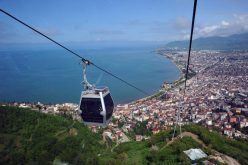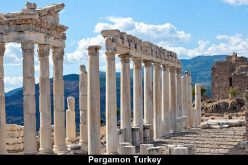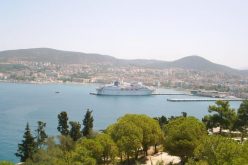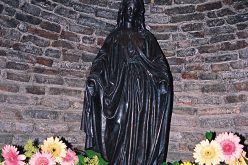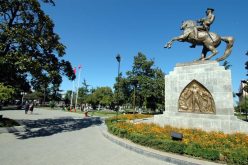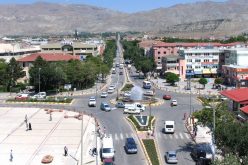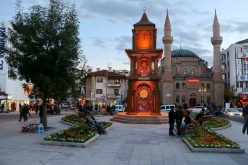Bolu
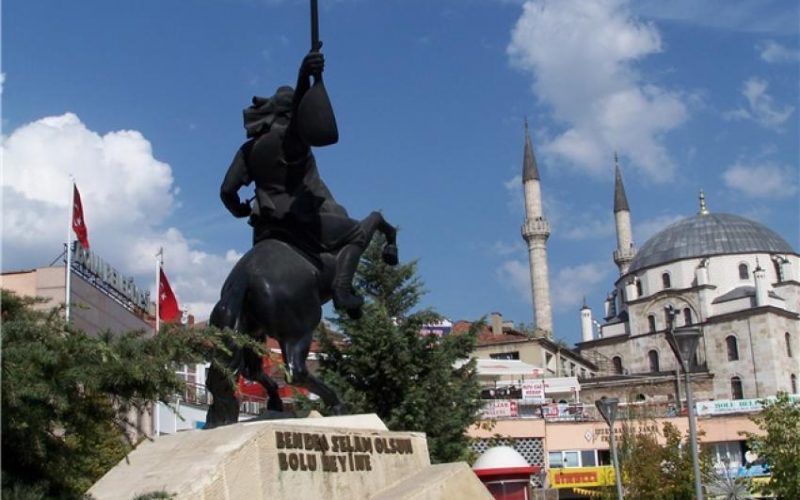
Bolu
Bolu is a city located in the Western Black Sea region of Turkey. It is famous for its cooking tradition that prevails since the ottoman Empire when the master chefs of the Ottoman palaca were entirely selected from cooking artisans of Bolu; more correctly to say: of Mengen which is a province of Bolu. Although the past of the city extends to antics, little has remained since the ancient civilisation of Bytinia. The name ‘Bolu’ has derived from Claudiapolis. Today the main attraction of the city is the surrounding gren landscapes, nearby located ski resort Kartalkaya and the traditional civil architecture of provinces like Mudurnu and Goynuk.
Bolu province is the city where the shades of green and blue embraces each other, sleeping and waking together, where the wind still whispers one of the most dramatic legends at the peaks of the high mountains, where numerous civilizations was founded and developed, leaving plenty of creations and artwork behind.If you want to see the beauties of Bolu, which were kneaded by the nature, mankind and history together and listen to the folk songs of Köroğlu which are sang by the mountains, all you need to do is endure a bus journey. Reaching Bolu Province is quite easy, as the city is located nearly at the middle point of the highway, which connects the two major cities, Ankara and Istanbul.
Places To Visit;
Bolu Museum: The museum is located inside the Culture Center and the works exhibited in the museum are obtained from various dated excavations executed at the region. Among these works are the head piece of a statue, which is suspected to belong to the Roman King Antonius, coins from the Roman, Byzantine and Ottoman period, statues, inscriptions and ethnographic house hold objects.
Telephone of the Museum: (+90 – 374) 215 16 91
Bolu (Bithynium – Claudiopolis): According to the archeological data, the first settlement period of the Bolu plain extends up to the BC 3rd thousands. The settlement of the Bithynium – Claudiopolis city, located on the hills inside the city center extends to BC 7th century according to the findings from Hisartepe excavation in 1978. Ruins of Antinous Temple and a structure which is assumed to be the theatre, coins, pots, bottles, statues and tomb steles belonging to various periods are discovered in the excavations executed until today. These works and remnants are exhibited in the Bolu Museum.
Seben Rock Houses: ( Old Settlement Region) There are rock houses having more than one floors carved in the surface of the rocks of the deep valleys which are in the vicinity of Çeltik Creek, Hoçaş, Kaşbıyıklar and Yuva villages of Seben District.
Gerede Asar Castle: The castle is located to the southeast of Örencik Village of Gerede District. There are abundant Byzantine period ceramic remnants scattered on the field surrounding the castle indicating that the castle is from the Byzantine Period. Also there is a cave entrance above the castle facing north.
The mosques of Bolu province are Büyük Mosque (Yıldırım Beyazıt Mosque), Kadı Mosque, Saraçhane Mosque, İmaret Mosque, Ilıca Mosque, Süleyman Paşa Mosque, Yıldırım Mosque, Kanunî Mosque, Yukarı Tekke Mosque and Eskiçağa Yıldırım Mosque.
The mausoleums of Bolu province are Tokaî Hayreddin Mausoleum, Akşemseddin Mausoleum, Ömer Sekkin Mausoleum, Aşağı Tekke Mausoleum, Ümmi Kemal Mausoleum, Kasım Dede Mausoleum and Babahızır Mausoleum.
Yukarı Taşhan (Upper Stone Inn): The Yukarı Taşhan is located at the Bolu central Büyük Mosque quarter and was constructed by Abdullah Ağa in 1804.
Orta Hamam (Central Bath): This bath was constructed by the order of Yıldırım Beyazıt in 1389. The bath was constructed in the style of double bath and the interior sections are highly decorated. It is located at the city center.
Tabaklar Bath: The bath was constructed by the order of Tavil Mehmet Paşa in the 16th Century. The bath has two separate sections and the interior is covered with marbles.
Sultan Bath: This bath was constructed by the order of Sokullu Mehmet Paşa in the 16th Century. The bath was constructed in the style of double bath.. It is located at the city center.
Süleyman Paşa Bath: The bath is located in Göynük District. It was constructed by the order of Gazi Süleyman Paşa in 1335.
Yıldırım Beyazıt Bath: The bath is located in Mudurnu District and is adjacent to the Mosque having the same name. It is the most beautiful bath among the other baths constructed in the same period. The bath was constructed in 1382. It is one of the most original samples of early period Ottoman baths.
The bath attracts attention with its corolla entrance gate and dome crossings.
Yıldırım Bath: The bath is located in the Eski Çağa Village of Yeniçağa District. The bath was constructed in the name of Yıldırım Beyazıt in 1388 and is an important architectural creation.
Aşağı Bath (Lower Bath): The bath is located in the Kitirler quarter of Gerede District. It was constructed from the rubble stone by the end of 14th century.
The Göynük District had been announced as “Urban Protected Area “. The district accommodates a rich number of old Turkish Houses. The houses in this district are mostly constructed by the beginning of the 20th century. In the sitting rooms of the some houses, the ceiling is adorned by various patterns. There are courtyards called “Hayat” (living) in front of the houses.
The Mudurnu District is also announced as Rural Protected Area and accommodates a rich number of old Turkish Houses. The houses of Mudurnu display similar properties with the houses of Göynük in the scope of civil architecture and these houses representing the history and culture of the district are under protection.
Yedigöller National Park is in the north of the Bolu province, and south of Zonguldak in the western Black Sea region. The park is the best known for the lakes formed by landslides, the rich plant life which gives dense coverage to the area, and the abundance of trout living in the lake. The structure of the land, which has tendencies to subside, is the main factor in the lake’s formation.
The dominant plant cover is beech trees, and there are also oaks, hornbeams, alders, black pine, Scotch pine, firs elm and lime trees. As a result of effective protection of plant and animal life, the animals inside the park like deer, pigs, wolves, foxes and squirrels are increasing in number. There is also a deer protection area.
This area saw the first cultured trout farm in Turkey, established in 1969, and as a result trout fishing is a popular activity. The sightseeing tower at Kapankaya, inside the park, offers a great opportunity to view a wide area over the lakes and unique landscape. One of the most famous items is the monumental tree signboard on the way to the tower.
Kökez Nature Reserve is near Atacak, in the district of Bolu in the Western Black Sea province. The 324 hectares have a very untouched and rare forest ecosystem, with exceptionally tall and old Uludag fir trees, plus beech and horn-beam trees. The forest also contains wild cherry, hazelnut and strawberries, and is a home to deer, pigs, bears, wolves, foxes and rabbits.
Akdogan Nature Reserve is near the village of Yeniguney, in the central district of Bolu in the Western Black Sea region. This is the only place in the world, where the endangered Midwife pine tree grows and spreads naturally. In addition to this rare species, others include the larch and oak trees. The forest is also home to pigs, foxes, weasels, rabbits, squirrels, hedgehogs, partridges, stock-doves, turtle doves, cuckoos, owls, bee-eaters, woodpeckers and goldfinches.
Sülüklügöl Nature Reserve is in the region of Mudurnu, near the villages of Akyol and Kuskavagi, south of Bolu in the Western Black Sea region. Suluklu Gol (Lake) has a unique forest ecosystem, caused by the tectonic movements of the earth which has created a very damp environment. Species of trees found here are larch, Scotch pine, fir, beech, oak, popular, horn-beam, lime, cherry and silver birch. The forest is also home to the roe deer, wild boar, bear, wolf, fox, rabbit, sparrow hawk, and tree frog.
Abant Lake (NATURAL PARKS) is 33km away from Bolu, in the west of the Black Sea region, and exactly halfway between Ankara and Istanbul. The lake shelters a variety of plants, and 1150 hectares were designated the status of Natural Park in 1988. The main species are Scotch pine, beech, larch, oak, poplar, ash, horn- beam, willow, juniper, forest rose, tamarisk, hazelnut, holly, dog-rose, bracken, blackberry, strawberry, mint, raspberry, ivy, nettle, mare’s tail, and a variety of pasture grasses and trees. Species of animals include pig, deer, roe deer, bear, fox, jackal, rabbit, plus birds of prey and singing birds. The best time to visit the lake is between May and September, especially for walking and picnicking around the lake. There are a few hotels in the park.
Write a Comment
Only registered users can comment.




